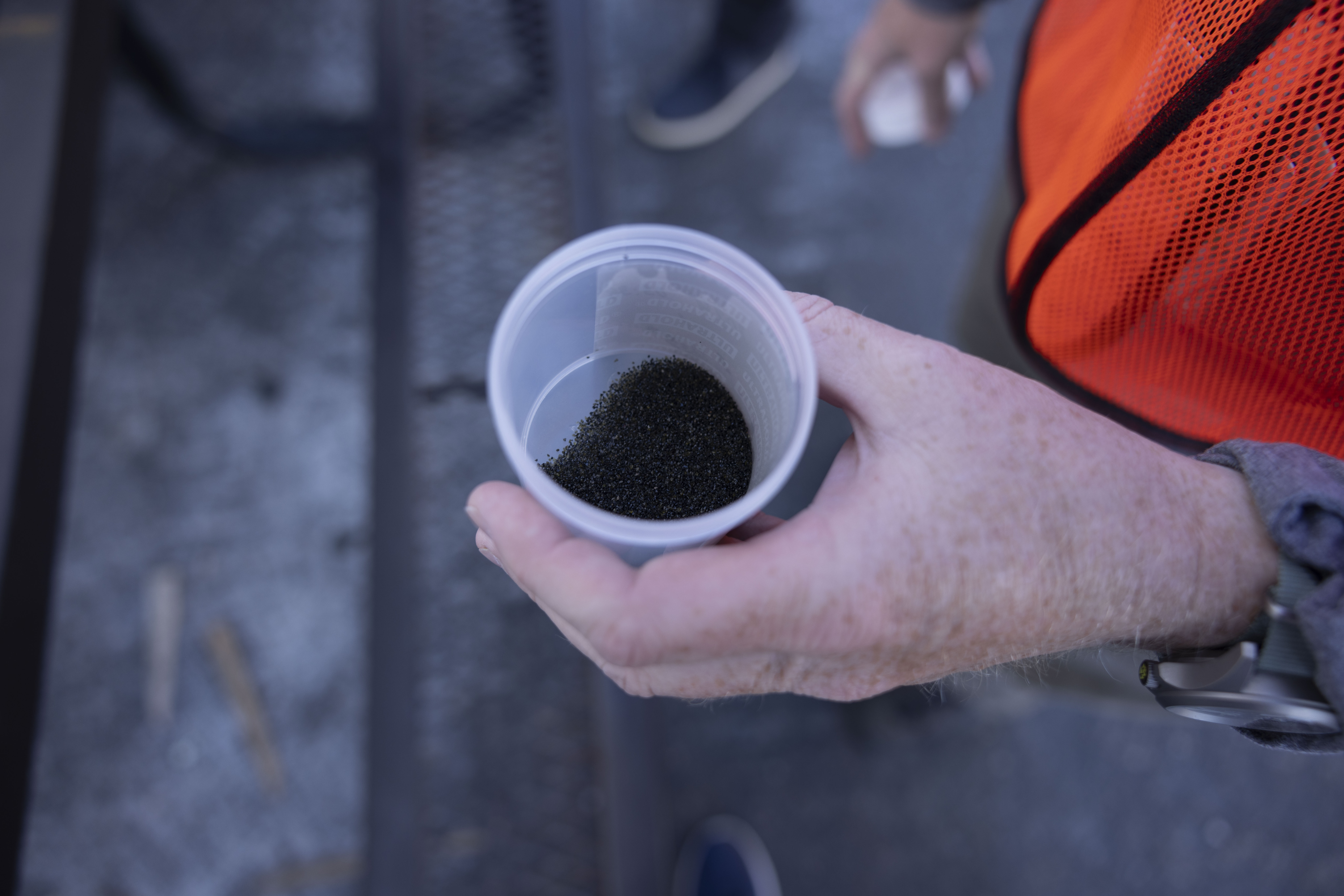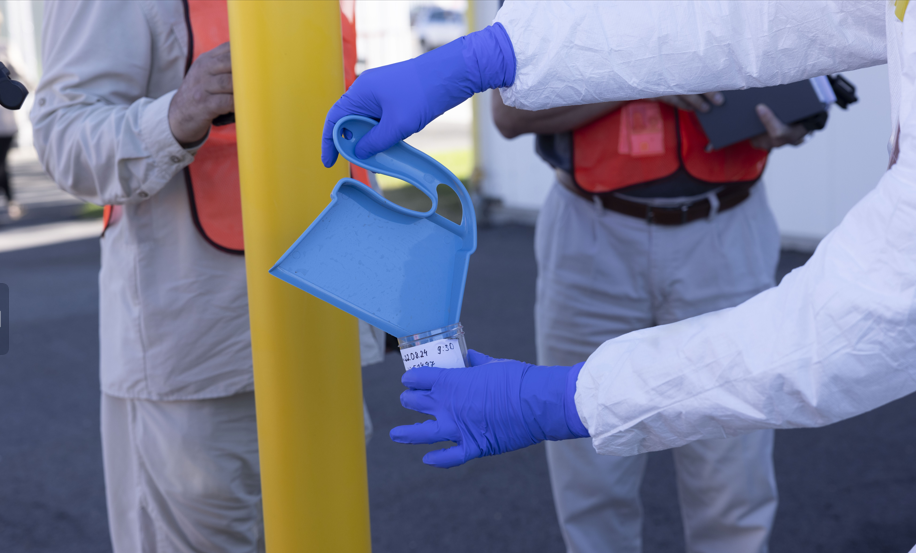Newswise — It’s a long way from the Donbas region of Ukraine to Idaho, but Ukrainian officials recently made the trip to learn about collecting evidence after a nuclear attack.
Ten soldiers from the Armed Forces of Ukraine and 10 members from the Security Services of Ukraine spent a week at Idaho National Laboratory learning and practicing debris collection techniques for post-detonation nuclear forensics.
Nuclear forensics, which includes the science of determining the origin of nuclear materials used in a detonation, is an essential element of the United States’ deterrence strategy. Being able to trace the source of material used in a nuclear device allows the U.S. to credibly hold accountable any state complicit in an act of nuclear terrorism.
While Ukraine has practiced nuclear forensics as part of its counter nuclear smuggling efforts, officials sought to learn more about how to apply nuclear forensics in a post-detonation scenario after Russia invaded Ukraine in February 2022. INL’s decades of research, expertise and support to U.S. nuclear forensics operations position it as one of the few entities capable of providing Ukraine with nuclear forensics support.
Although it is highly unlikely that Russia would use a nuclear weapon in Ukraine, “Ukraine takes the threat of a Russian nuclear attack very seriously,” said INL’s David Chichester, a directorate fellow who develops radiation measurement systems and consults on nuclear counterproliferation and forensics. “They have tackled it aggressively because the threat is real to them,” he said.

While the Ukrainian visitors got a chance to enjoy Idaho Falls’ American heartland amenities during their stay, the war was never far from their minds. During their time in the U.S., they would often be alerted in real time about attacks back home.
During the training exercises, Ukrainian officials were assisted by experts with years of nuclear forensics training expertise from INL, Argonne National Laboratory, the Kansas City National Security Campus – Albuquerque, Lawrence Livermore National Laboratory, Los Alamos National Laboratory, the Nevada National Security Site and the National Nuclear Security Administration. NNSA is a semi-autonomous agency within the U.S. Department of Energy that is responsible for the U.S. nuclear weapons stockpile, naval nuclear propulsion, and nuclear nonproliferation and counterterrorism programs.
Clad in personal protective equipment at locations throughout INL’s Research and Education Campus in Idaho Falls, Ukrainian officials learned proper techniques for sweeping areas, gathering dust and debris, placing it into radiation shielded storage casks called lead “pigs,” and loading the parcels into vehicles for transport.
The Ukrainian delegation said the training was effective and useful. “We wish to thank you for inviting us to this training and hosting us in your city,” said one participant, speaking through a translator. “The (response capabilities) we are learning this week will absolutely be implemented when we return home to Ukraine.”
The participants’ names have been withheld for security purposes.
“The support and training you are providing to us means more than you know,” said another Ukrainian official.
Instructors from the national labs and NNSA who led the training exercise are part of the Department of Energy Forensics Operations team. These U.S. experts are on call 365 days a year to collect nuclear detonation debris samples for analysis. They can respond at a moment’s notice during an emergency. DFO uses specialized aircraft and equipment to establish mobile command centers and forensics laboratories anywhere in the world. The materials they collect may be brought to the U.S. for further analysis.
DFO’s capabilities are especially relevant given Russia’s reputation for exploiting misinformation. It’s important for Ukraine to possess the ability to incontrovertibly prove the source of nuclear materials. INL and NNSA’s nuclear forensics expertise helped advance their capabilities.

DFO has evolved in response to Ukraine’s ongoing conflict. “The relationship with Ukraine has prompted some changes in DFO,” said C.J. Johnson, senior adviser to the Department of Energy’s NNSA Ukraine Task Force. “We had to turn responders into teachers,” he said.
“The point of this (exercise) is to build the capability for collecting high-quality samples for analysis,” said Johnson. “Until two years ago Ukraine had no capability of this kind.”
The U.S. began conducting post-detonation forensics exercises close to 20 years ago when the National Security Council asked what would happen if the country needed to collect debris for analysis after a nuclear detonation. Around that time, INL’s national security and nuclear nonproliferation capabilities in support of NNSA were starting to grow, leading to the first ground debris collection exercise in 2005. Since then, INL has hosted annual nuclear forensics training exercises for U.S. first responders in case the unthinkable should happen.
“There is no better place in the world to do nuclear forensics training than the national labs,” said Johnson. “The capabilities and expertise the labs — including INL — have for conducting real world training is unmatched.”
In addition to INL and the NNSA’s Office of Nuclear Forensics, the Ukrainian team’s visit to INL was supported by the U.S. Department of State. Nuclear forensics training events provide an opportunity for scientists and security experts to practice the tactics, techniques and procedures they would employ following a real-world nuclear attack. The relationships and mutual trust developed while working together through realistic scenarios are equally valuable.
“You can’t maintain a proficient level of this capability if you don’t train,” Chichester said.
About Idaho National Laboratory
Battelle Energy Alliance manages INL for the U.S. Department of Energy’s Office of Nuclear Energy. INL is the nation’s center for nuclear energy research and development, celebrating 75 years of scientific innovations in 2024. The laboratory performs research in each of DOE’s strategic goal areas: energy, national security, science and the environment.
Follow us on social media: Facebook, Instagram, LinkedIn and X.

